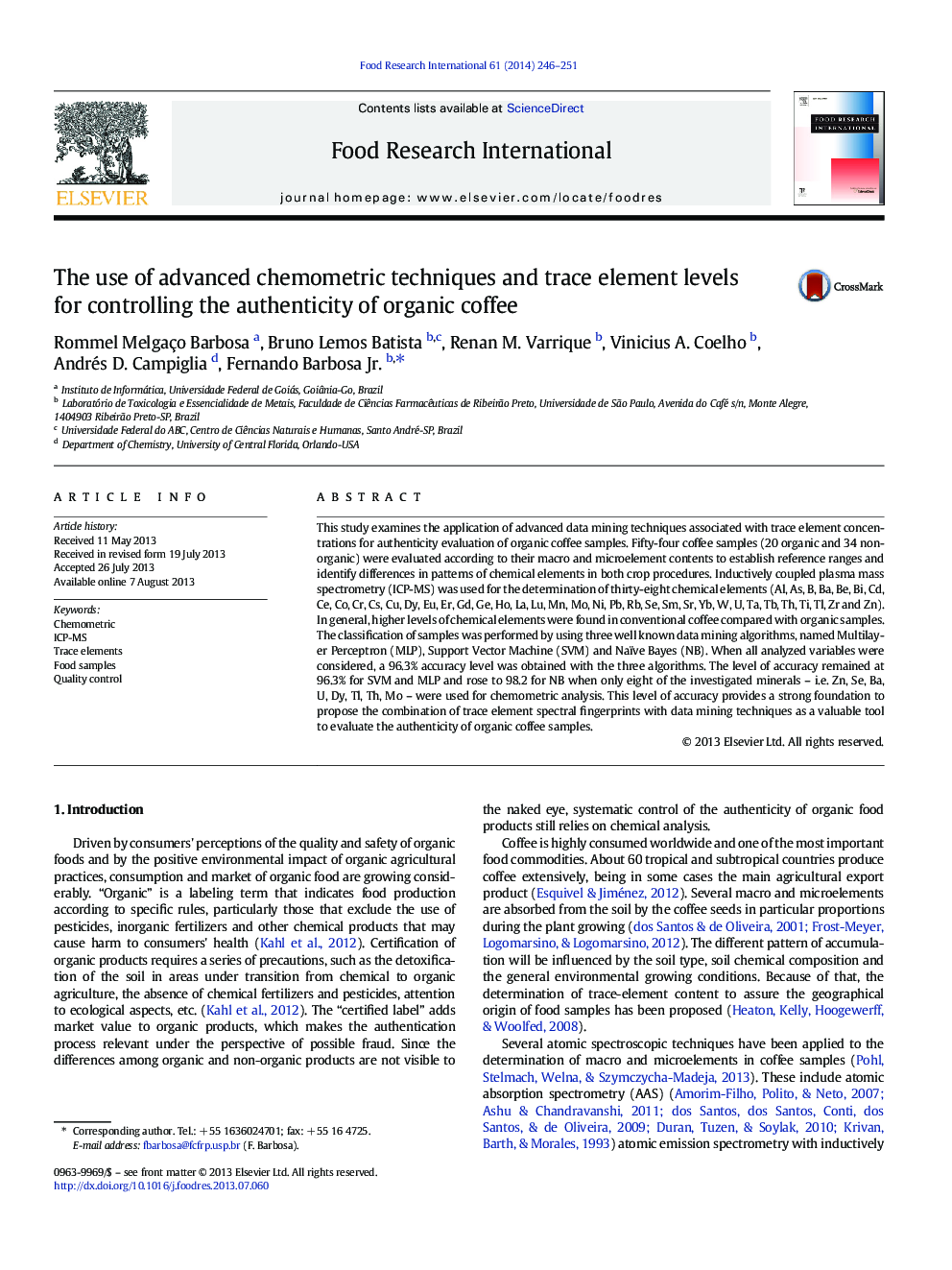| Article ID | Journal | Published Year | Pages | File Type |
|---|---|---|---|---|
| 6396432 | Food Research International | 2014 | 6 Pages |
â¢38 chemical elements were determined in coffee samples by ICP-MS.â¢Authenticity of organic coffee is possible by using chemometric.â¢The use of Naïve Bayes and 8 minerals provides 98% of accuracy.
This study examines the application of advanced data mining techniques associated with trace element concentrations for authenticity evaluation of organic coffee samples. Fifty-four coffee samples (20 organic and 34 non-organic) were evaluated according to their macro and microelement contents to establish reference ranges and identify differences in patterns of chemical elements in both crop procedures. Inductively coupled plasma mass spectrometry (ICP-MS) was used for the determination of thirty-eight chemical elements (Al, As, B, Ba, Be, Bi, Cd, Ce, Co, Cr, Cs, Cu, Dy, Eu, Er, Gd, Ge, Ho, La, Lu, Mn, Mo, Ni, Pb, Rb, Se, Sm, Sr, Yb, W, U, Ta, Tb, Th, Ti, Tl, Zr and Zn). In general, higher levels of chemical elements were found in conventional coffee compared with organic samples. The classification of samples was performed by using three well known data mining algorithms, named Multilayer Perceptron (MLP), Support Vector Machine (SVM) and Naïve Bayes (NB). When all analyzed variables were considered, a 96.3% accuracy level was obtained with the three algorithms. The level of accuracy remained at 96.3% for SVM and MLP and rose to 98.2 for NB when only eight of the investigated minerals - i.e. Zn, Se, Ba, U, Dy, Tl, Th, Mo - were used for chemometric analysis. This level of accuracy provides a strong foundation to propose the combination of trace element spectral fingerprints with data mining techniques as a valuable tool to evaluate the authenticity of organic coffee samples.
